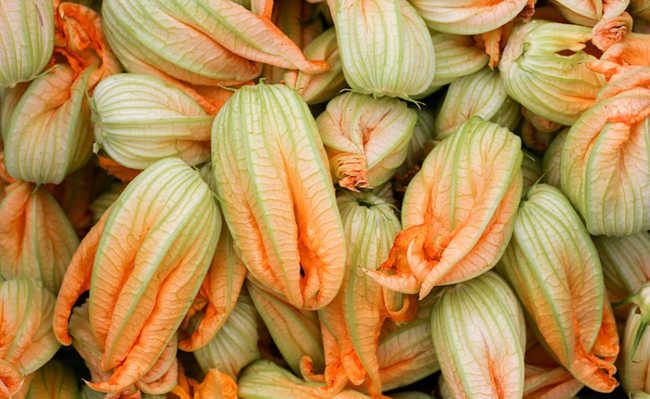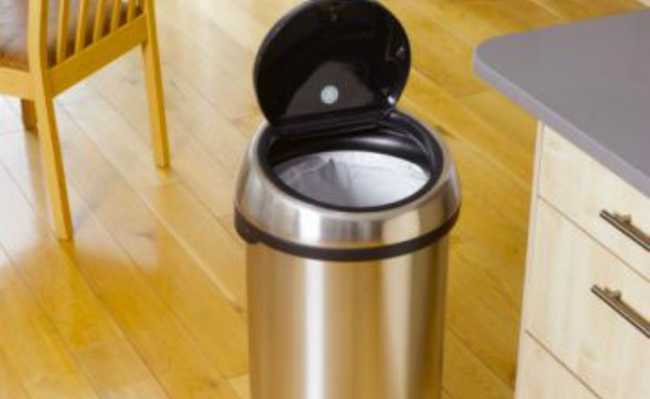Pumpkin flower is edible and good
Rich in fiber, calcium and vitamin C, pumpkin blossom is a tasty and delicate ingredient.

Pumpkin flower. Edited and resized image of net_efekt, is available on Wikimedia and licensed under CC BY-SA 2.0
The pumpkin flower of the species Cucurbita pepo it is edible and good for your health. It is a popular ingredient in Italian cuisine, but in Brazil it is a Panc (Unconventional Food Plant). Although it is also called zucchini flower, it is a plant native to Mesoamerica, with a mild and slightly sweet taste.
properties
Every 100 grams of pumpkin blossom provides, on average, 12 calories, including:
- 94.3 g of water
- 1.7 g of protein
- 0.4 g of lipids
- 0.5 g of carbohydrate
- 0.5 g of natural sugars
- 0.9 g fiber
- 2 mg of iron
- 39 mg of calcium
- 37 mg of phosphorus
- 0.09 mg of vitamin B1 or thiamine
- 0.16 mg of vitamin B2 or riboflavin
- 252 µg of vitamin A
- 28 mg in vitamin C

Edited and resized image by Antonio José Cespedes, available on Pixabay, is in the public domain
- Nine Calcium-Rich Foods That Are Not Dairy
Benefits
Pumpkin blossom is rich in fiber and water, which makes it a possible ally in combating constipation. Consuming fiber-rich foods like pumpkin blossom is important not only to prevent constipation, but also blood sugar spikes, bad cholesterol, colorectal cancer, and obesity. Learn more about this topic in the article: "What are dietary fiber and its benefits?".
- Fiber-rich foods fight diabetes and high cholesterol
- Does altered cholesterol have symptoms? Know what it is and how to prevent it
- What is the Glycemic Index?
In addition, pumpkin blossom is low in calories, which means it is an alternative to avoid excess weight gain, mainly because its fiber provides satiety. Eating fewer calories and getting satiated means less weight gain and less risk of developing diabetes. Learn more about this topic in the article: "Diabetes: what it is, types and symptoms".
It is also a good source of calcium, an important mineral for the health of bones and teeth, as well as for the role it plays in the mechanisms of muscle contraction and blood coagulation, in the regulation of cell permeability and in the transmission of nerve impulses.
The recommended daily intake of calcium is 1,000 mg per day for most adults, although women over 50 and all over 70 should receive 1,200 mg per day, while children and young people ages 4 to 18 should consume 1300 mg.
However, a large percentage of the population cannot meet their calcium needs through their diet, according to the study. In addition, most people believe that calcium can only be obtained from animal milk and its derivatives.
Elderly people with osteoporosis problems, for example, increase their milk intake believing that they are improving calcium absorption. However, consuming too much milk of animal origin can have the opposite effect and damage the bones. Understand this theme better in the article: "Is milk bad? Understand".
In other cases, there may be people who have lactose intolerance or allergy and are confused about how to meet their calcium requirements. There are also people who adhere to the vegan philosophy or who prefer to avoid consuming milk and dairy products for other reasons.
Thus, pumpkin blossom and other calcium-rich foods such as sesame and dark green leaves are great alternatives to increase calcium intake.
Pumpkin blossom is also rich in phosphorus, which is important for its involvement in the energy processes of the human body.
It is also an excellent source of provitamin A, which is essential for good vision, bone growth, testicular and ovarian function; and vitamin C.
Vitamin C has remarkable antioxidant powers, strengthens the immune system and neutralizes free radicals. Learn more about this topic in the article: "What is vitamin C and its importance".
- Antioxidants: what are they and in what foods to find them
- What are free radicals?
Contraindications
There are no known contraindications to the consumption of pumpkin flowers, unless you are allergic to this vegetable. The information shown represents general indications and does not in any way replace medical and nutritional recommendations. To ensure a healthy and balanced diet, consult a nutritionist.
Pumpkin Flower Recipe
Ingredients
- closed pumpkin flowers
- 1 tofu tablet (350g)
- 3 macerated garlic cloves
- 1 coffee spoon of salt
- 1 tablespoon of oregano
- 2 tablespoons of oil
- 100 g of chickpea flour
- 125 ml of cold water with a dash of dissolved salt
Method of preparation
First of all, prepare the pastry. Mix the chickpea flour with the cold salted water, stirring well, and refrigerate for half an hour. In the meantime, clean the flowers very carefully and dry them with a paper towel. Cut the stem from the outside and the stigma (which is on the inside). Beat the tofu, salt, oil and oregano until fluffy. Carefully place this mixture inside the flowers, leaving nothing out. Put the frying oil to heat. Remove the pastella from the fridge, dip the pumpkin flowers in it and, after the oil is hot, fry them.










